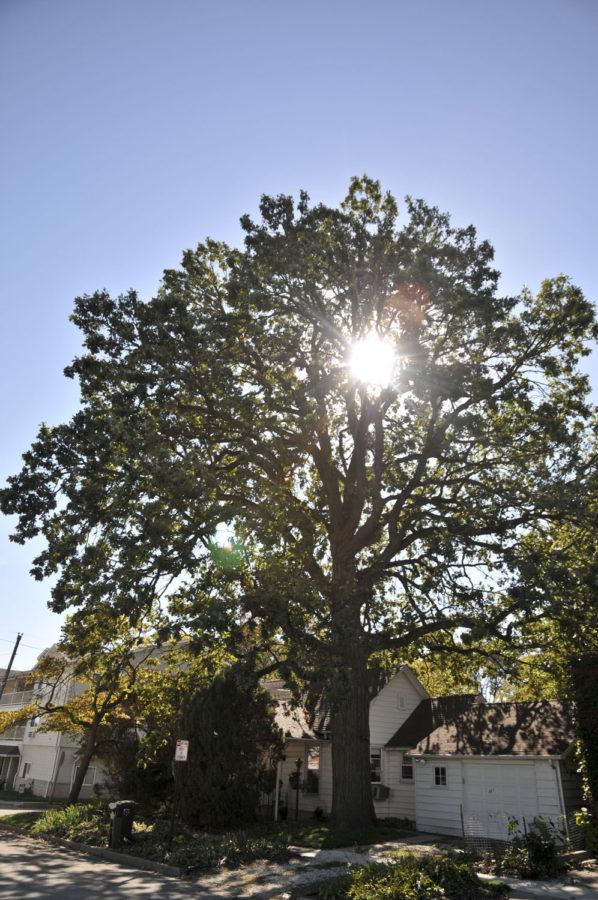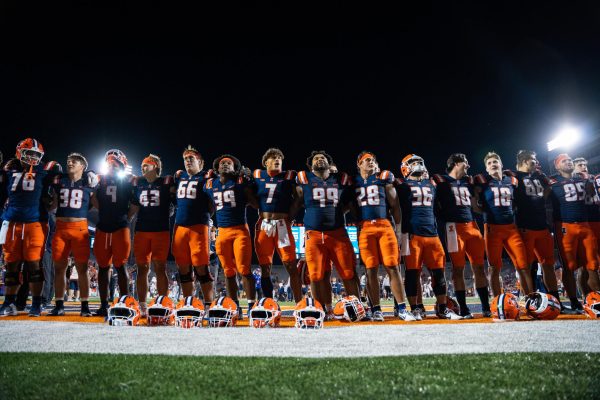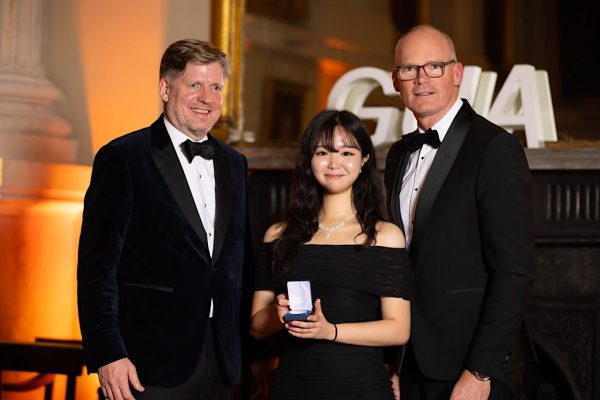Program honors historic, unique trees in Urbana
Feb 9, 2015
Last updated on May 8, 2016 at 09:04 a.m.
As impassioned Bostonians cast their tea into the Boston Harbor in 1773, over 1,000 miles to the west, a tiny sapling was beginning to grow in Urbana. This tree, a bur oak at the corner of Main and Maple streets in Urbana, is one of the oldest trees in the city — though it is not alone.
Urbana is home to thousands of notable trees, some whose lives extend 100, 150 or even over 200 years into the past. To highlight these unique and historic trees, the City of Urbana has recently established the Urbana Legacy Tree Program. The program is still in its infancy, and has officially only been around since 2014.
“It’s to recognize trees and bring awareness to the community,” said Mike Brunk, Urbana’s city arborist. “I’m very excited about this program. It’s brand new, and I think it came together really well.”
So far, there are three designated Legacy Trees in the community, but the program continues to receive new tree nominations to expand in the future.
Get The Daily Illini in your inbox!
Legacy trees
Dorothy Neumann has 150-plus years of history growing in her front yard in the form of a massive bur oak tree.
“It was struck by lightning probably 10 years ago, but you can’t even tell,” she said. “Mike (Brunk) says that the roots reach clear across the street and up to the railroad tracks.”
Neumann’s tree, in front of her house at 301 Griggs St. in Urbana, was the first living Legacy Tree in the program. On Oct. 9 of last year, she received a certificate to commemorate its legacy status.
“I love it. I tell people that the tree is more valuable than my house,” she chuckled. “I have a very modest little house and the tree is spectacular.”
The very first Legacy Tree actually came before Neumann’s, though unfortunately it cannot be seen today. The Sim Hackberry Tree, previously located at High Street and Coler Avenue in Urbana, grew at the one-time residence of Joseph W. Sim, an acclaimed Urbana mayor, lawyer and judge in the 1970s and 80s.
The Hackberry tree was over 100 years old and a community favorite, but after surviving an ice storm in 1990 and several of its limbs weakening since 1986, it had to be taken down as a safety measure in 2014 (however, as of Sunday, it can still be seen in Google Maps street view).
Finally, the newest Legacy tree is visible at 309 High St. in Urbana. The American Sycamore is over 100 feet tall and continues to thrive today.
Community significance
The Urbana community has a history of standing up for its trees. In addition to the locally adored Sim Hackberry Tree, two other case studies stand out: a bur oak at Long’s Garage and a ginkgo at an apartment complex on East Green Street.
In both cases, one in 1979 and one in the 1990s, the community rallied against developers to keep the two historic trees. After locals voiced their opinions and the issues made their way to the news, both developers decided to redesign their buildings and keep the trees standing.
“So we looked at those two studies, and we felt that this public peer pressure was useful,” Brunk said. “The idea (for the Legacy Tree Program) was to present … our special trees of the community so that the public would know about them and potential developers would know about them.”
To broaden the program and integrate it further into the community, the City of Urbana collaborates with the Urbana Park District.
“We looked at the program and thought it really mirrored our interest in promoting and preserving a lot of our older trees,” said Tim Bartlett, executive director of the Urbana Park District. “We can help promote the value of trees and promote the history that’s associated with these very long-lived treasures in town.”
With this community collaboration, there is potential to include walking trails or tree walk programs in Urbana parks to provide a health and wellness aspect to it, Bartlett suggested.
Further, there could be an education facet in the future, encouraging teachers to bring their classes outdoors and learn about local ecology and history.
What makes a tree a legacy?
“The roots of why we created the program go back more than 10 years,” Brunk said. “I was out at Portland, Oregon, for a conference, and I came across this … program that they had, which was ‘Heritage Trees of Portland.’”
Based off of this initial idea, Brunk and his colleague began researching and creating a similar program to be implemented in Urbana. They studied comparable programs across the U.S., then created a system to analyze the local trees based on previous ideas.
The characteristics of a legacy tree are based on the following categories: size, rarity, history, age, location, aesthetics and special ecological value. Community members are encouraged to nominate their favorite Urbana tree based on one or more of those standards.
In fact, the community remains the highest priority. The program is fully funded by donations, and Urbana residents are able to nominate their trees to become Legacy Trees. This gives the community members a sense of pride and involvement in their own city’s program.
“We really want the public to nominate those trees and get involved that way so they have an attachment to the program,” Brunk said. “The program will only be as good as the community wants.”
Documenting Urbana’s trees
Besides leading the Legacy Tree Program, Brunk also helps document and maintain a comprehensive tree inventory throughout Urbana. Trees are measured and evaluated based on their size and assessed for safety hazards to ensure that they are not a threat to the public.
“We live in a Chicken Little society, if you will, when we live under a canopy of trees,” Brunk said. “Trees drop limbs. And so our priority is to go and trim those trees in such a way that we try to minimize limb failure and tree failure.”
The public can visit urbana.mytreekeeper.com to see the details of more than 15,000 trees in Urbana, look for a specific address or search for a certain species.
“One of the most important features of all our trees is that they absorb … rain water,” Brunk said. “If we don’t have trees to absorb that water, we’d have to manage it (in the form of) underground infrastructure with all the drains.”
Overall, the Urbana Legacy Tree Program seeks to highlight trees’ importance in the community through ecological, aesthetic and social benefits.
“I just think that the more people that realize what treasures they are, the better care will be taken of them,” Neumann said.
Reema can be reached at [email protected].






